Clerodendrum inerme

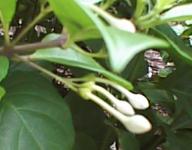
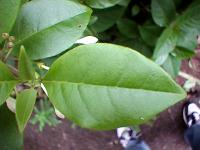
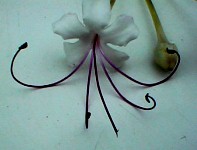
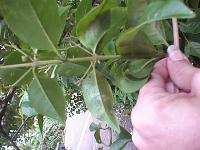
Location collected: Kapingamarangi Village
Date collected: November 28, 1998
Collected by: Brigeen Perman
Synonym: Clerodendron inerme
Chamorro: lodugao
Chuukese (lagoon): apuoch
Chuukese (other): etiu, pucherik
Kosraen: kwacwak
Mortlockese: ulo
Pohnpeian: ilau
Yapese: i'ruch
Kosrae
Shrue Kilafwasru: Kosrae steam bath (srawuk) of kwacwak is used by women during their monthly menstrual cycle. February 2004
Sadie Benjamin: We would grind them up by hitting them on a rock, then squeeze the water out of it, then rub it under the arm, the area where you sweat. 13 April 2010 at 4:55pm
Pohnpei
Camihla Santos (Kitti): Ilau is used in medicine, decoration, and the black arts. Used to treat fever, skin rash, flu, headache, infected umbilical cord, eye infections, evil spirit prevention. Can also be added to coconut oil and rubbed into skin. Details below. February 2004.
- Decoration: the plant is very tolerant of shaping and trimming to a particular shape. Will grow from cuttings.
- Eye infection: Pound the flowers and squeeze the juice in your eyes.
- Fever: Pound the leaves and boil the pounded leaves. When it cools, pour liquid over your head so that it may spread all over your body.
- Flu: Pound the leaves, squeeze the juice out, and drink it.
- Babies: Mix the juice with water so that it may not be bitter for the child.
- Adults: Do not mix with water but fill the juice in one cup and drink it.
- Flu with headache: Put leaves in pot of water at boiling temperature (removed from stove!) and then cover yourself with a sheet. Breathe the steam (umwulap)
- Oil fragrance: Put pounded flowers in oil to fragrance the oil.
- Pregnancy: Pound the leaves and spread on your stomach to protect unborn child from evil.
- Protection from evil spirits: Smash the young leaves and put it on your forehead or eat it to repel evil spirits.
- Skin rash: Pound the leaves and mix with coconut oil and use on your skin or just use the juice of the leaves on infected skin.
- Umbilical cord infection: Pound the leaves and put it in a can and burn it until it dries. When it cools, spread it on the baby's belly button.
- Womb cleaning: Pound the leaves and drink the juice that you squeeze from the leaves.
Pohnpei steam bath treatment: umwulap
Pingalap
Meriko Alik: Pingalapese use for fever and pink eye. February 2004.
- Genus species: Clerodendron inerme
- Family: Verbenaceae
- English name: Glory Bower genus
- Growth form: shrub
- Growth location: terrestrial
- Growth environment: cultivated garden
- Growth zone: Tropical
- Average height: Two to three meters.
- Stem: Woody, smooth
- Leaf arrangement: Simple, opposite
- Stipule: Absent
- Petioles: 0.5 to 1.0 cm long.
- Leaf blade: Ovate to elliptical shape, 5 to 10 cm long, acute to acuminate tip, green,
smooth slightly shiny upper surface, pinnate venation, margin is entire.
- Inflorescence: Cyme or umbel usually comprised of three flowers joined at a common base
point.
- Floral bracts: None.
- Flower: Rotationally symmetric, salverform, white--symmetry, sex, arrangement of male
and female flowers if unisexual
- Calyx: Green, fused and reduced to a cup-like structure surrounding the ovary.
- Corolla: Fused white corolla with five lobes.
- Stamens: Four reddish purple, upwardly curved stamens
- Ovary: Ovary is inferior.
- Pistil: A single redish purple, upwardly curved style, style splits into a two forked
stigma.
- Fruit: Not observed at collection time. Reported to be green to brown obovoid
fruit, 1 to 1.5 cm long which splits into four one-seeded nutlets at maturity (Dr. W.
Arthur Whistler).
- Seed: Not observed
- Anything else: No strong floral odor.
- Cultural usage: Leaves used for fever and cough, leaves are also used in conjunction
with other plants leaves for ghost diseases.
Known to be used in Samoa as a local medicine as well (Samoan
Herbal Medicine, Whistler, Isle Botanica 1996).
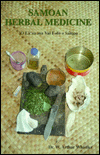
Ethnoherb •
Ethnobotany •
Herbarium •
Botany •
Work •
COMFSM









